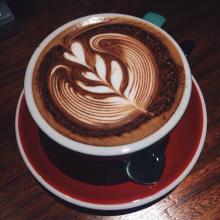Introduction to the varieties of Kaduai Coffee beans produced in Panamanian Jade Manor by Regional Grinding scale treatment
Introduction to the varieties of Kaduai Coffee beans produced in Panamanian Jade Manor by Regional Grinding scale treatment
The rosy summer of the Emerald Manor. Rose summer is planted in many places, but it is the emerald manor that carries forward the variety of rose summer. This year, the Jade Manor is divided into eight areas for harvest. Last month, we actually went to ES-08, this time to ES-03. The output of this manor is only about 100 kilograms of raw beans per year, which is very rare. They also use organizational methods to protect the bean-the raw bean can only be obtained in three ways: first, the jade estate bids for the world's rosy summer in May-June, the second is the world bid for the Best of Panama in Panama every May-June, and the third is the worldwide bid from charitable funds. So, either way, the source of raw beans is well documented, avoiding roses from other places posing as Panamanian roses.
The four groups of beans on display are ES-03 and ES-08 of Jadeite Manor, which are the same manor (Esmeranda), the same variety (Rosa), the same treatment (washing), and the same bidding club (Rose Summer auction of Jade Manor). The other Don Pachi and Elida are the same volcano (Baru Volcano), the same treatment (sunburn), and come from different varieties of the same bidding club (BOP) (Rosa and Kaduai). In the past few years, the aroma of raw beans is not obvious, in the past two years, the handling techniques have become more and more powerful, to this phase of the trial beans, the aroma of raw beans has been amazing.
Geisha, pronounced like a geisha in Japanese, is also called "geisha coffee".
The variety was found in the primeval forest of Mount Rosa in Ethiopia in 1931 and sent to the Kenya Coffee Research Institute.
Introduced to Uganda and Tanzania in 1936
Introduced to Costa Rica in 1953
In 1970, Panama was founded by Francesca of the seven agricultural gardens in Dongba. Mr. Serraxin got the seeds from CATIE, Costa Rica, and started growing Rosa Coffee.
It went from obscurity to export to Kenya, Tanzania, Costa Rica, and then to Panama. Won the cup test championship for many years in a row, defeating the victorious army Bobang, Kaddura, Kaduai, iron pickup and other varieties.
In 2007, the international famous bean cup test sponsored by the American Fine Coffee Association (SCAA) won the championship again, and the bidding price was sold at US $130 per pound, setting a record for the highest price in the history of competition beans.

Important Notice :
前街咖啡 FrontStreet Coffee has moved to new addredd:
FrontStreet Coffee Address: 315,Donghua East Road,GuangZhou
Tel:020 38364473
- Prev

Boutique Coffee Description Flavors of Latte-Colombia Coffee Flavors Description
Flavor of latte-Colombia coffee Flavor description. Although the Ottoman army was brave and good at fighting, it retreated in panic under the attack of the Polish army and the Viennese army. When it left, it left a large number of military supplies outside the city. Among them, dozens of sacks of coffee beans, which the Muslim world had controlled for centuries and refused to export, arrived easily.
- Next

Introduction to the varieties of grinding scale in the taste production area of Yunnan Katim coffee bean flavor description treatment
Yunnan Katim Coffee Bean Flavor description processing method Grinding scale varieties of Tiebika Coffee Tree in Yunnan Province. Tibica is an old variety of Arabica species. It is also known as Kona Hawaii and the Blue Mountains of Jamaica. In the vast expanse of Katim, it is easy to recognize. After careful observation, you will find that each variety has its own sample.
Related
- Detailed explanation of Jadeite planting Land in Panamanian Jadeite Manor introduction to the grading system of Jadeite competitive bidding, Red bid, Green bid and Rose Summer
- Story of Coffee planting in Brenka region of Costa Rica Stonehenge Manor anaerobic heavy honey treatment of flavor mouth
- What's on the barrel of Blue Mountain Coffee beans?
- Can American coffee also pull flowers? How to use hot American style to pull out a good-looking pattern?
- Can you make a cold extract with coffee beans? What is the right proportion for cold-extracted coffee formula?
- Indonesian PWN Gold Mandrine Coffee Origin Features Flavor How to Chong? Mandolin coffee is American.
- A brief introduction to the flavor characteristics of Brazilian yellow bourbon coffee beans
- What is the effect of different water quality on the flavor of cold-extracted coffee? What kind of water is best for brewing coffee?
- Why do you think of Rose Summer whenever you mention Panamanian coffee?
- Introduction to the characteristics of authentic blue mountain coffee bean producing areas? What is the CIB Coffee Authority in Jamaica?

